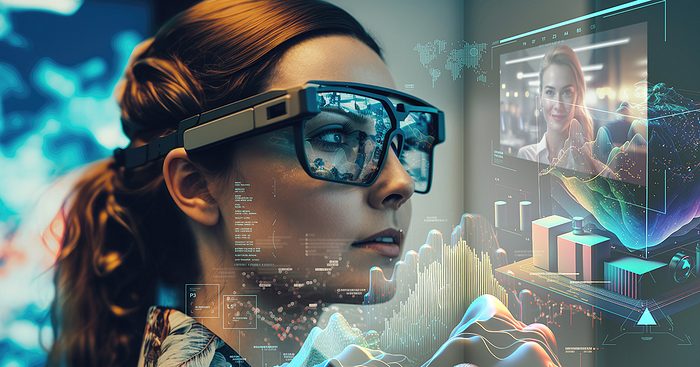Augmented reality (AR) has emerged as a powerful technology that overlays digital content onto the real world, creating immersive and interactive experiences. Unlike virtual reality, which replaces the real world with a simulated environment, AR enhances the physical world by adding virtual elements, such as images, videos, and 3D models. As AR technology continues to advance, its applications across various industries are expanding, offering new opportunities and implications for society.
Applications of Augmented Reality:
- Education: Augmented reality is transforming education by providing interactive and engaging learning experiences. Students can use AR-enabled devices, such as smartphones or tablets, to access educational content overlaid onto textbooks, worksheets, or physical objects. AR enhances comprehension and retention by bringing abstract concepts to life and making learning more interactive and immersive.
- Retail and E-Commerce: In the retail sector, augmented reality is revolutionizing the way consumers shop and interact with products. AR-enabled apps allow shoppers to visualize furniture in their homes before making a purchase, try on virtual clothing and accessories, and explore product features and specifications in a more interactive manner. AR enhances the online shopping experience by bridging the gap between the digital and physical worlds.
- Healthcare: Augmented reality is being used in healthcare for medical training, surgical planning, and patient care. Surgeons can use AR overlays to visualize patient anatomy during surgeries, enhancing precision and reducing the risk of complications. Medical students can practice procedures and simulations in a virtual environment, gaining hands-on experience in a safe and controlled setting.
- Navigation and Wayfinding: AR technology is transforming navigation and wayfinding by providing real-time contextual information and guidance in the physical world. AR navigation apps overlay directions, points of interest, and navigation cues onto the user’s view of the environment, making it easier to navigate unfamiliar places, find nearby attractions, and discover points of interest.
- Industrial Applications: In industries such as manufacturing, construction, and maintenance, augmented reality is being used for training, maintenance, and remote assistance. AR-enabled smart glasses or headsets provide workers with hands-free access to information, instructions, and visualizations overlaid onto their field of view, improving efficiency, safety, and productivity.
Implications of Augmented Reality
- Privacy and Security: As augmented reality becomes more integrated into everyday life, concerns about privacy and security arise. AR devices and applications collect and process vast amounts of data, raising questions about data privacy, user consent, and security vulnerabilities. Developers and policymakers must address these concerns to ensure that AR technology is used responsibly and ethically.
- Social Impact: Augmented reality has the potential to reshape social interactions and relationships by blurring the boundaries between the physical and digital worlds. AR-enabled social experiences, such as shared games and virtual hangouts, offer new opportunities for connection and collaboration. However, concerns about addiction, distraction, and disconnection from reality also arise as AR technology becomes more pervasive.
- Accessibility and Inclusivity: Ensuring that augmented reality technology is accessible and inclusive to all individuals, regardless of abilities or socioeconomic status, is essential for maximizing its potential benefits. Developers must consider factors such as affordability, usability, and accessibility features to ensure that AR experiences are inclusive and accessible to diverse populations.
- Ethical Considerations: Augmented reality raises ethical questions about the authenticity of augmented content, the potential for misinformation and manipulation, and the impact of augmented experiences on perceptions of reality. Developers and users must be mindful of the ethical implications of AR technology and strive to promote transparency, integrity, and responsible use.
Conclusion
Augmented reality holds immense promise for transforming industries, enhancing experiences, and shaping the future of technology. From education and retail to healthcare and navigation, AR applications are expanding the possibilities of what is possible in the digital age. However, as with any emerging technology, it is essential to consider the implications and address ethical, social, and accessibility challenges to ensure that augmented reality is used responsibly and ethically for the benefit of society.
